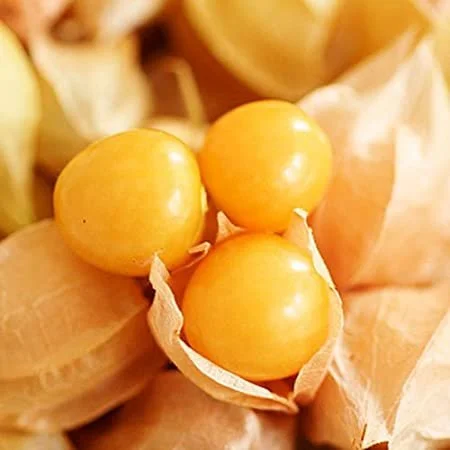Also known as ground cherries or cape gooseberries or husk-tomatoes, these fruits are the smaller cousin of the tomatillo.
These tiny yellow and pale orange fruits are about the size of a cherry (about 1/2″ diameter) and come wrapped in a delicate paper-like husk.
The skin of this tomato is smooth and taught, like a cherry tomato, but the juicy flesh has a hint of citrus, pineapple and mango in its sweet taste. The consistency is the same as a tomato.
The fruit grows on a small vine. When ripe, the husk turns brown and the fruit drops from the plant. If left in the husk, it will keep for several weeks.
How do you use husk cherries?
The husk cherry tomato has a pleasing and distinctive flavor and is used raw in cocktails, salads, or as dessert. Its most common use is in jam, but it's also frequently used in pies or as a cooked sauce on cakes and puddings.
Are husk cherries tomatoes?
The husk cherry tomato is a member of the genus Physalis, a group of herbaceous plants belonging to the solanaceae(nightshade) family, related to tomatoes, peppers, and eggplants.
The husk cherry tomato, Physalis pruinosa, grows from 18 to 30 inches tall with oval or heart-shaped fuzzy leaves. The buff-yellow flowers are marked on the inside with five brown spots. Its greenish-yellow fruit, about the size of a cherry tomato, is produced inside a papery husk.
Plant growth and culture is much the same as tomatoes. Start seeds indoors or in a greenhouse, then transplant 6-week-old seedlings to the garden a week or two after the average date of the last spring freeze. Like tomatoes, they respond well in ordinary well-drained garden soil in a sunny location. Set plants 2 to 3 feet apart. They have few insects or diseases and no physiological peculiarities. The fruits begin to mature from mid to late summer, about the same time as late tomatoes.

